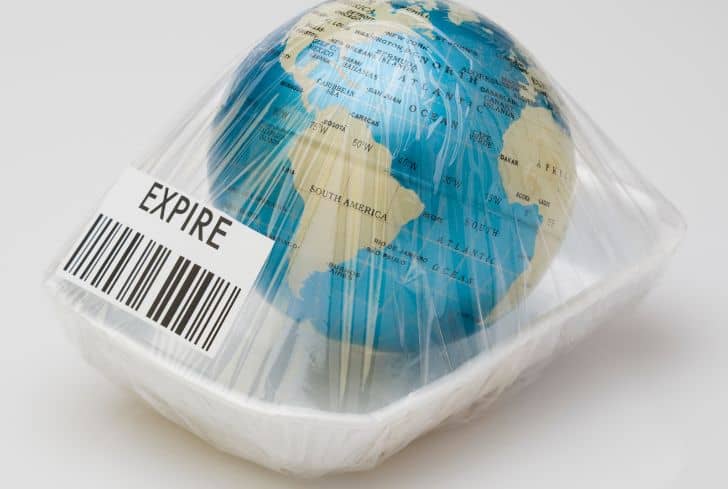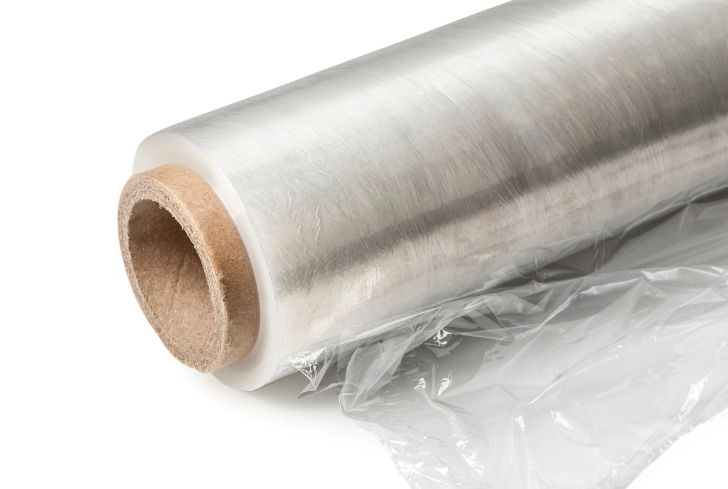Can you recycle cellophane? If you have ever asked that question, you are not the only one. We recycle all sorts of materials now, which is excellent for the environment. However, it is not every day that you hear about a recycling center that accepts cellophane.
Come to think of it – cellophane has many everyday uses. But during the festive periods, it is even more popular. We consume so much cellophane that it is important to wonder where the waste matter goes and what effect it has on biodiversity.
If you keep reading, there is a lot of information about cellophane and its environmental impacts. By the end of the article, you will find it easier to make informed and environmentally conscious decisions about your consumer habits. Enjoy!
Can Cellophane Be Recycled?
No, cellophane cannot be recycled because of what it is made of. Although you can recycle plant materials like wood waste, the principle does not apply to cellophane. Typically, cellophane is made from wood pulp, but you cannot recycle it because that is not the only ingredient used in manufacturing.
There are two types of cellophane – true cellophane and synthetic cellophane. They individually have pros and cons, but the summary is that you can recycle one batch but cannot compost it.
Similarly, the other is better in a compost pile than in a recycle bin.
You cannot recycle true cellophane, but it is biodegradable and will break down within the shortest period. On the other hand, synthetic cellophane, made from polypropylene, will not break down in a compost pile, but you can recycle it.
So, how do you know which is which? Well, you can look at the label if you have bought it yourself. The manufacturer will indicate whether it is true cellophane or otherwise.
If it is made from plant matter, you cannot recycle it. But derived from plastic, you will have no difficulty finding a recycling center for it.
To answer whether you can recycle cellophane or not, the answer primarily depends on what type you are dealing with. Cellophane may also come as a gift package, and you will be unable to check the kind in this case.
We recommend inquiring at your local recycling center whether you can recycle the material; do this in cases where you are unsure.
Alternatively, there is a way to determine the type of cellophane you are dealing with. Fold the material – true cellophane does not come undone when you fold it, but one made from plastic or polypropylene will unravel when you release your hold on it.
Is Cellophane Wrap Recyclable?
Yes, cellophane wrap is recyclable – put it with the rest of your plastic waste. But again, the type of cellophane wrap in question determines the recyclability. If plastic is made from plastic, recycling will be a walk in the park. In contrast, cellophane wrap made from natural materials is harder to recycle, if not impossible.
Cellophane wrap can be recycled. However, there are two major types in the market – natural and synthetic.
Natural cellophane wrap is made from plant cellulose, and you can identify it through the wrap test. We have shown you how to conduct the wrap test – refer to it in the sections above to find out how to identify recyclable cellophane.
There are two types of cellophane materials, and this is what determines whether you can recycle cellophane wrap or not. When dealing with synthetic wrap, you can easily recycle it with other high-density polyethylene or HDPE materials.
It is worth noting that the new decade has made it easier to recycle high-density polyethylene, but this is only a new trend. Therefore, you may not immediately find a recycling center that accepts it.
In that case, make inquiries first. Use a recycling locator to check whether your local recycling center accepts cellophane wrap or not.
Difference Between Plastic and Cellophane
Plastic and cellophane are made from different materials, even though they look the same. Plastic and cellophane differ structurally. But again, you can also make cellophane from synthetic polymers, which are also plastic. So, to clarify and protect the environment, we are comparing plastic and cellophane made from regenerated cellulose.
Plastic is not the best substance for the environment. Single-use plastic, for instance, can be a burden not just to you but also biodiversity at large. Of course, it may be a sustainable alternative because you can recycle it repeatedly.
However, improper disposal of this waste item is not a new phenomenon. Perhaps it is because there are insufficient recycling centers, especially in developing cultures. This is not an excuse; the impact of plastic in the oceans, on land, and even on the atmosphere is not good.
Cellophane is made from a bioproduct – plant matter. This plant can be cotton, hemp, or wood. The plant fiber is biodegradable even when the lacquer is added to increase its strength.
In contrast, plastic is not biodegradable. It won’t break down like cellophane will. That is another difference. Cellophane is biodegradable because it is made from organic matter, while plastic is not.
Plastic is made from oil, a non-renewable natural resource. This makes sustainability another difference between plastic and cellulose. It is simply better to harvest and rely on resources that will be replenished in no time.
Cellophane is made from plant products. Two examples include cotton and hemp; cotton attains maximum growth in fifteen to twenty-five days while hemp requires three to sixteen weeks.
Our oil reserve is not in immediate danger, but it would be environmentally fair and considerate of the future generation to use our supply consciously.

Is Cellophane Eco-Friendly?
Mostly, yes, cellophane is eco-friendly. Cellophane is made from plant matter like hemp and cotton, which makes it a sustainable and environmentally conscious option. But in the same vein, the process of manufacturing cellophane wreaks a degree of harm to the environment, mainly through the disposal of waste substances like carbon disulfide.
Let’s start with the reasons cellophane is eco-friendly. One, it is a bioproduct; made from plant matter. The plants in question are sustainable because they are renewable natural resources. Even better, they grow fast, meaning there is no extinction risk.
This is a plus for the sustainability movement, even though it is better to avoid buying more than you need to reduce overall consumption and wastefulness.
As you already know, there are two types of cellophane. We have talked about the first type, made from plant matter. It is made from sustainable materials, but the synthetic form of cellophane isn’t.
Did you know that eighty percent of the oil produced globally is used to manufacture plastic? Synthetic cellophane is not as eco-friendly as its plant-based counterpart. The synthetic version is made from petroleum, which is a non-renewable resource.
The manufacturing process of plastic isn’t good for the environment too. It facilitates the release of greenhouse gases into the atmosphere. There are many reasons why plastic is terrible for the environment, but it has a redeeming quality, which is its ability to withstand repeated recycling.
Now, let’s look at the decomposition or result of the two categories of cellophane. True cellophane will decompose naturally because it is made from plant substances. Therefore, even if it ends up in a landfill, nothing detrimental will happen to the environment.
Synthetic cellophane will not end the same way. It will take long years for this material to finally break down because it is a plastic product. The process of decomposing is bad for the environment because toxins leak into the atmosphere.
Microplastics are also a harmful result of the decomposition process. You may have heard about it already; whatever you know is probably true. Microplastics are dangerous for us, our pets, plants, the soil, and biodiversity.
These tiny plastic particles can damage the internal organs of vertebrates and invertebrates. They can also travel miles and miles in the atmosphere and can be inhaled.
Microplastics are the end results of plastic decomposing, regardless of what they used to be. But enough with the dangers of microplastics; these are more than enough to advocate for reducing our plastic consumption.
That Christmas-patterned plastic wrap that looks beautiful on your Christmas hamper will take several decades to decompose. And when it eventually breaks down from the concentration of UV radiation, it becomes these microplastics.
In a nutshell, you can decide to stick to eco-friendly cellophane. The alternative has too many negative environmental impacts, but you can also recycle it.
A conscious effort to decipher the difference between both materials will help you determine how best to dispose of them.
Can You Put Cellophane in the Recycling Bin?
Yes and no. If cellophane is made from plastic material, you can put it in the recycling bin. But if it is plant-based, you cannot. In other words, true cellophane cannot be recycled, while synthetic cellophane is best recycled.
These two products are made from different materials, even though they look and may even feel the same. One batch is a form of plastic that can be recycled.
It is best to recycle synthetic plastic because it does not biodegrade. It is better put to use than sitting in a landfill.
On the other hand, you can allow cellophane made from bioproducts to biodegrade naturally. They cannot be recycled because they are made from regenerated wood pulp; recycling it will not produce a beneficial result.
If you don’t have a compost bin, you can put true cellophane in the waste bin. It will break down without leaching chemicals into the ecosystem.
Can Cellophane Be Recycled with Paper?
No, you cannot recycle true cellophane with paper. You also cannot recycle synthetic cellophane with paper, and the reason is that all these materials are different. True, paper is made from wood, and so is true cellophane, but regenerated cellulose is not what paper is made from.
Recycling regenerated wood pulp and cellulose fibers together creates a combination of materials with different compositions. They will meld together and become both inseparable and useless.
Recycling true cellophane is tricky, so best avoid it. You are not doing the environment any harm, trust us.
Plastic cellophane cannot be recycled with paper. The reason is also that they are made from different materials – plastic and paper. Recycling items that have different compositions together creates a mess that cannot be manufactured into anything.
Sustainable Alternatives to Cellophane
Sustainable alternatives to cellophane include plant-based plastics, shower-friendly paper, paper made from recycled stone and plastic, palm leaves, and corn starch paper.
These are sustainable options because they are bioproducts. The ones that aren’t are made from recycled stones and plastics and are harmless to the environment.
Conclusion
Your eco-friendly options for wrapping gifts and packaging other items are increasing, so there is almost no reason to shop for synthetic cellophane anymore.






